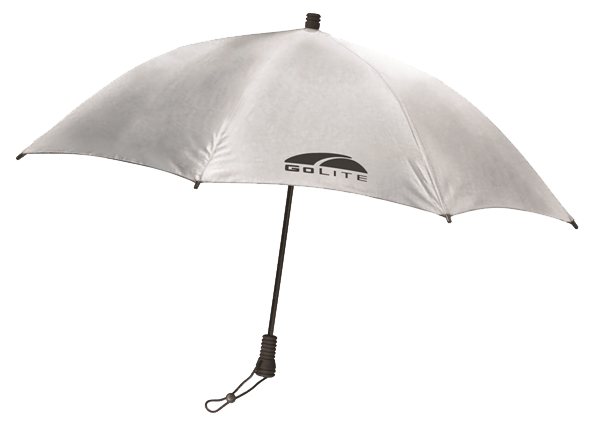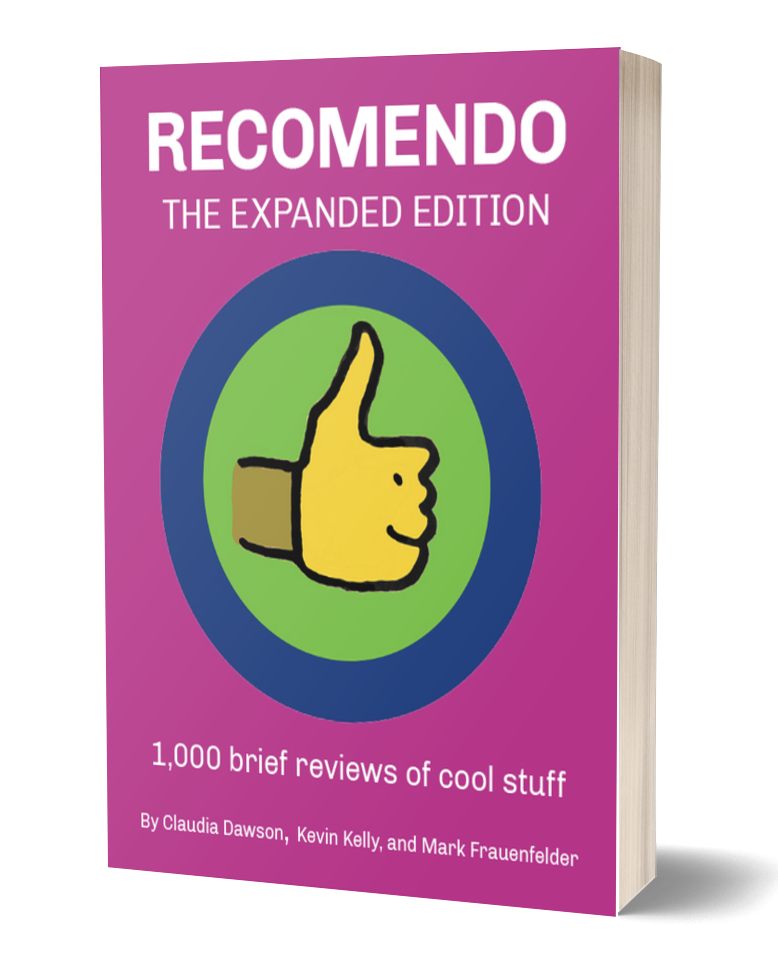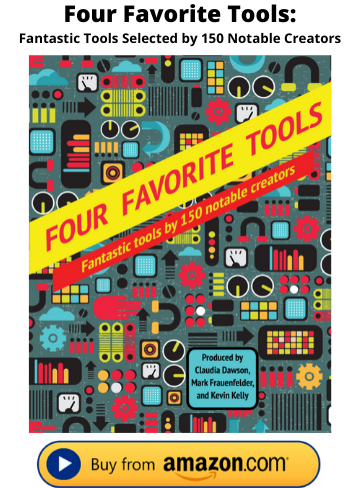11 November 2025
Only What’s Necessary / The White Donkey
Issue No. 92
ONLY WHAT’S NECESSARY – A WHOLE LOT OF PEANUTS AND SCHULZ STUFFED INTO ONE VOLUME BY CHIP KIDD
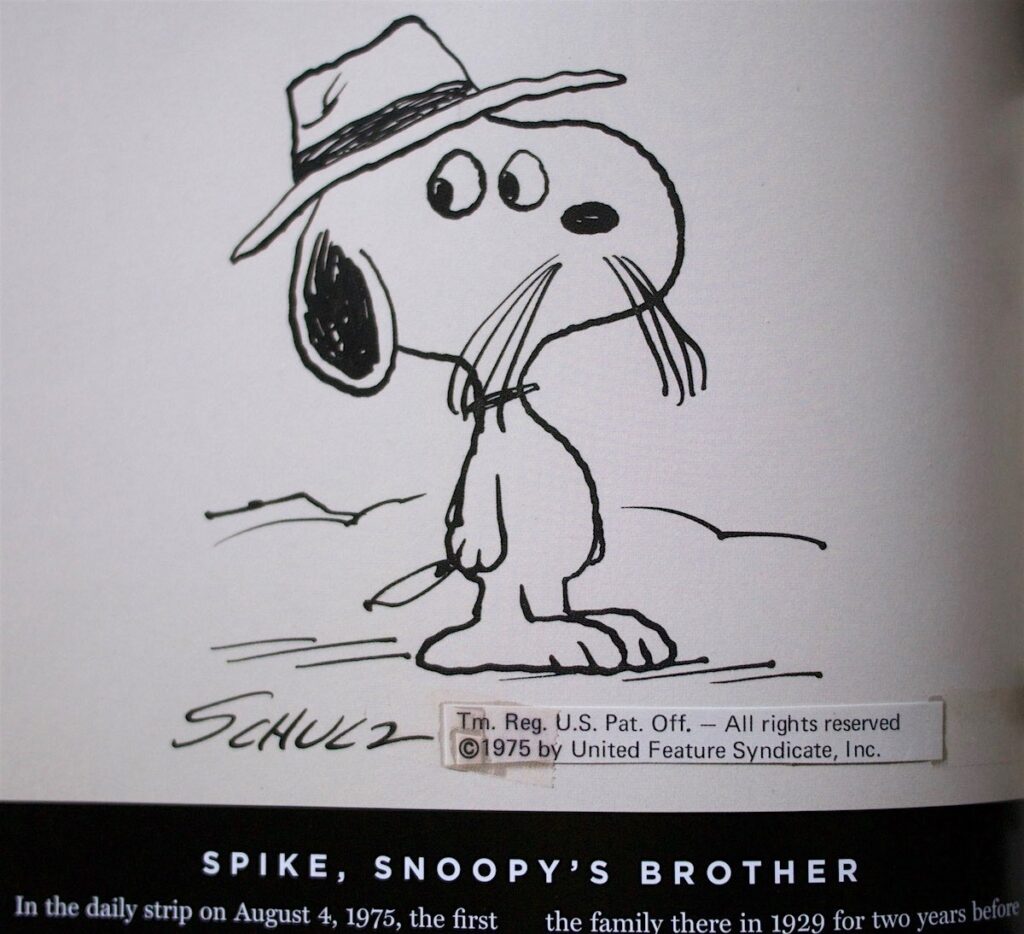
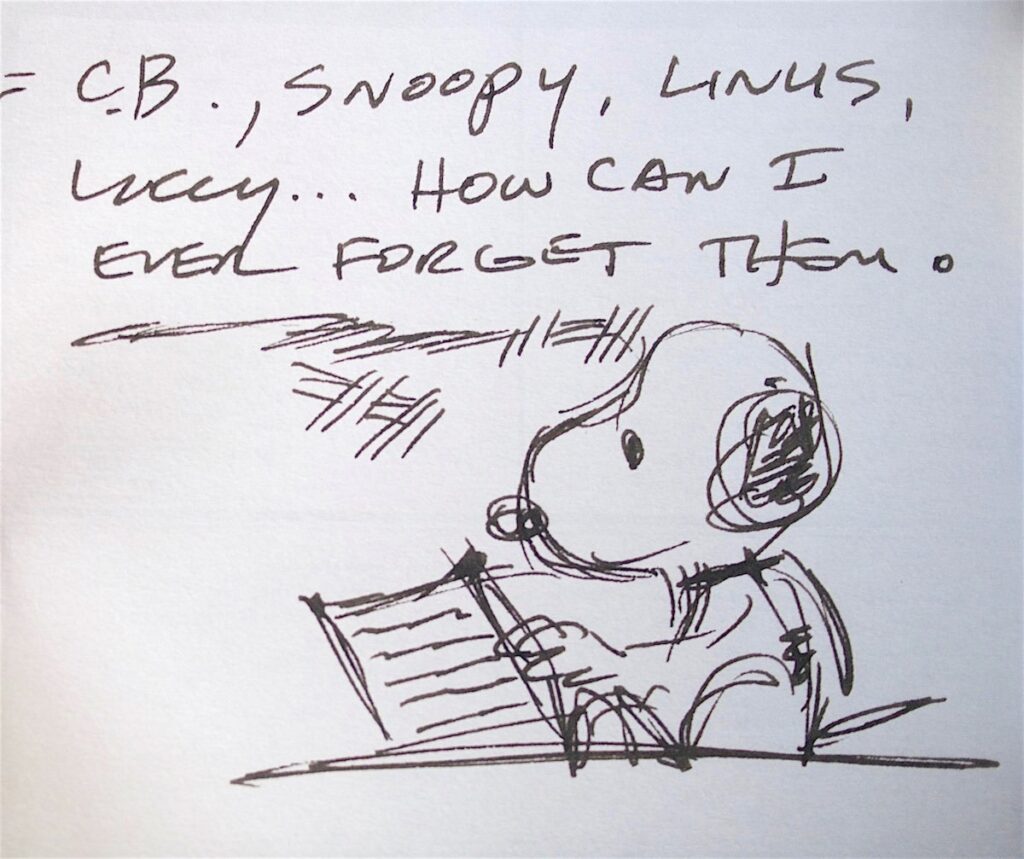


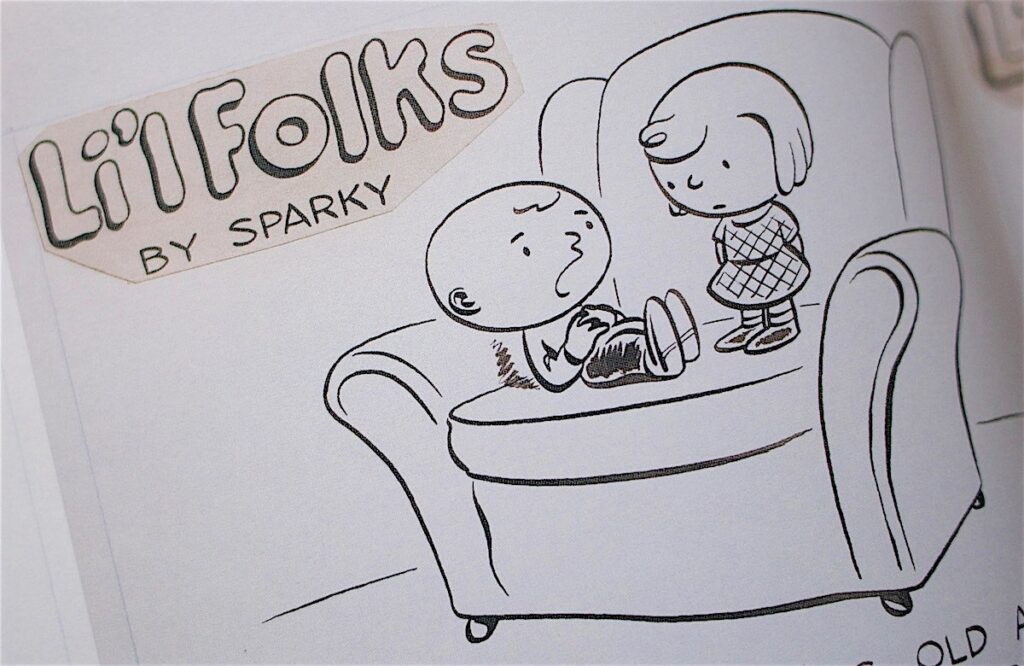

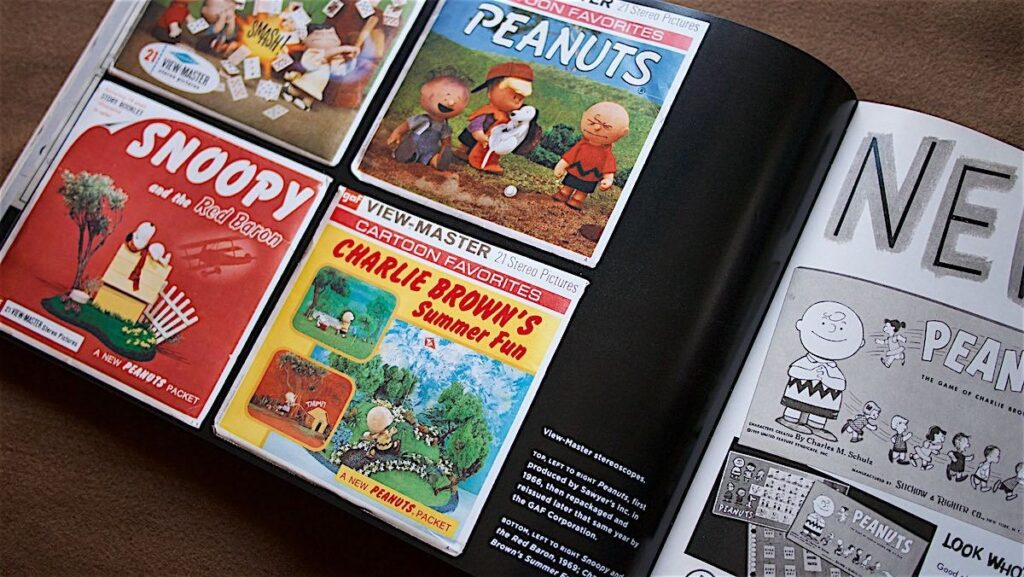
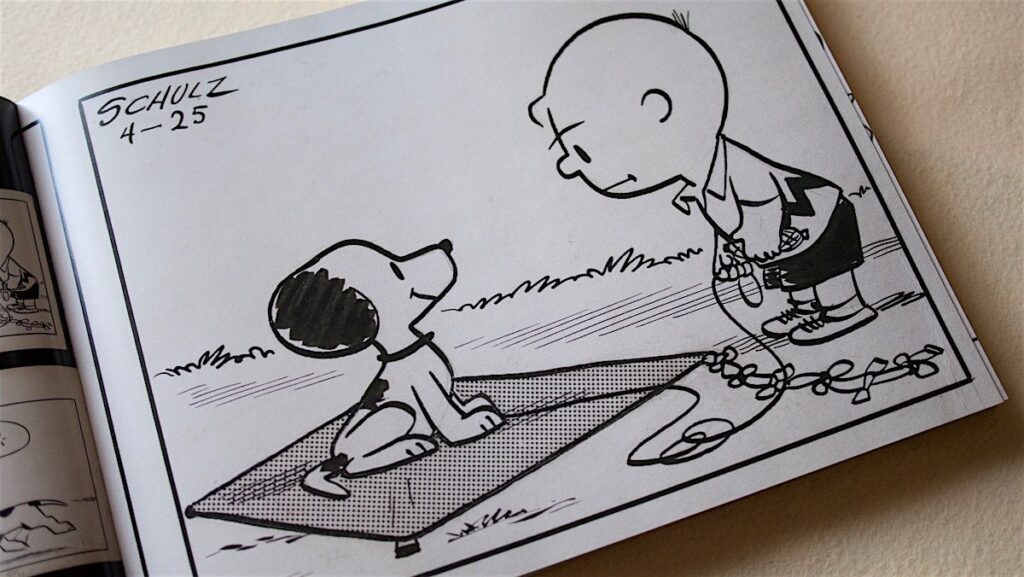

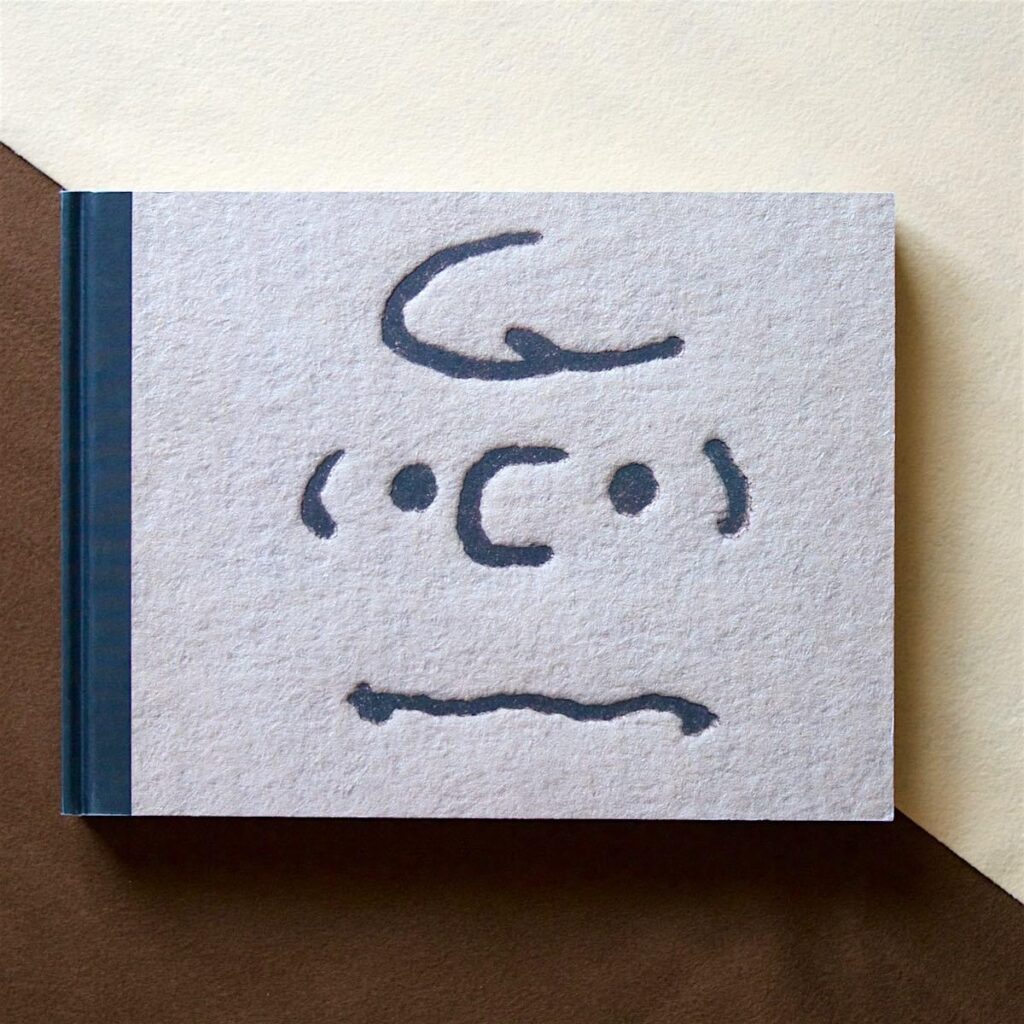
Only What’s Necessary: Charles M. Schulz and the Art of Peanuts
by Chip Kidd (author) and Geoff Spear (photographer)
Harry N. Abrams
2015, 304 pages, 12 x 9 x 1 inches
Here’s a quick list of everything to be found in Chip Kidd’s Only What’s Necessary: Charles M. Schulz and Peanuts:
Intro by Jeff Kinney
Foreword by Jean Schulz
“Behind the Door” by Karen Johnson (Director of the Schulz Museum in California)
Preface by Chip Kidd
Brief biography of Sparky Schulz, including pictures of his first published drawing in Ripley’s Believe it or Not
Photos & drawings of and from Schulz’s WWII Sketchbook
Early cartoons Schulz drew for the Saturday Evening Post
Schulz’s first printed comic strips (1947)
Li’l Folks strips
Peanuts strips
Process of drawing Peanuts
Rare, unfinished strips
Subscriber promotions for newspaper editors
Ads for Peanuts coloring books, viewmaster collections, color by numbers kits, candy bars, etc.
Pictures of the Peanuts board game
Vinyl dolls
Covers from the first collections
Advertisements featuring Peanuts characters
Braille editions
Correspondence with Harriet Glickman resulting in the creation of Franklin
Unpublished watercolors & other art
Intros and backstories for other characters (Spike, Woodstock)
“The Last Strip” by Paige Braddock (Creative Director at the Schulz Studio in California)
There is, in other words, a whole lot of stuff packed into this one single volume of ephemera. And it’s a heck of a package. Heavy, glossy pages bring out the differences in color between hand-drawn strips and their pasted-on title cards as well as the fine printing notes scribbled in the margins. Likewise, the color printing serves to show that these are photographs of the original strips and artwork rather than digital reproductions or post-processed scans.
The attention to detail and care that has gone into curating this book is obvious, considerable, and welcome. Special effort is made to not only display the various pieces of ephemera but to provide context for them. It’s easy to get lost in little stories and minutia detailing phenomena from a time gone by; I’ve been through the book several times now, each time going down one rabbit hole or another, becoming fascinated by some aspect or another of the Peanuts story that began (and sometimes ended) well before I was born.
Said aspects are fascinating (the production process), interesting (the board games and braille books), weird (the vinyl dolls), and, of course, just a little heartbreaking (the final strip), and served well by the top notch production values and curation. But I’m biased.
The title comes from Schulz himself, who referred to his cartooning style as keeping only what’s necessary. The designers of the book have equated this to simple, which is beautiful and eye-catching. But necessary can also mean everything: every line needed to show the characters’ feelings and reactions, every word needed to express the artist’s vision, every single thing needed to show why we still need Charlie Brown, Snoopy, Linus, and Lucy now, and for many years to come. – Joel Neff
THE WHITE DONKEY – FROM THE ONLINE COMIC SERIES ABOUT THE EXISTENTIAL CRISIS OF A MILITARY EXPERIENCE
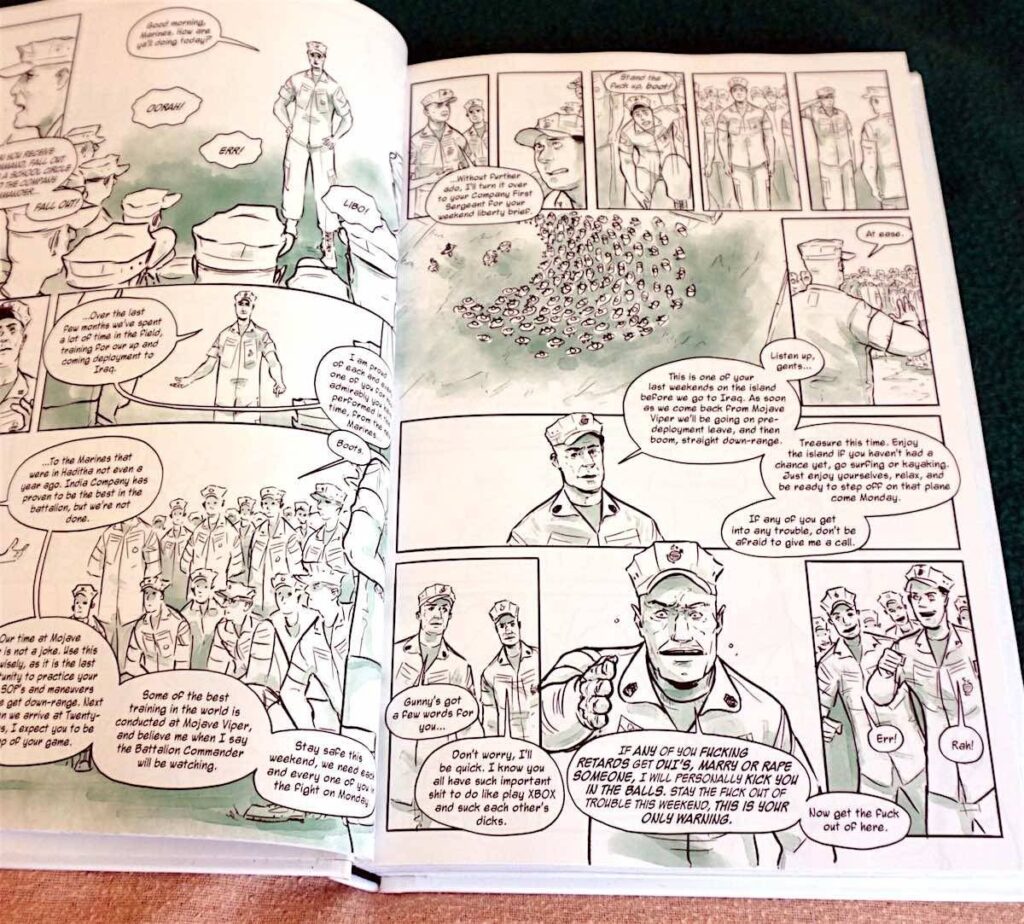
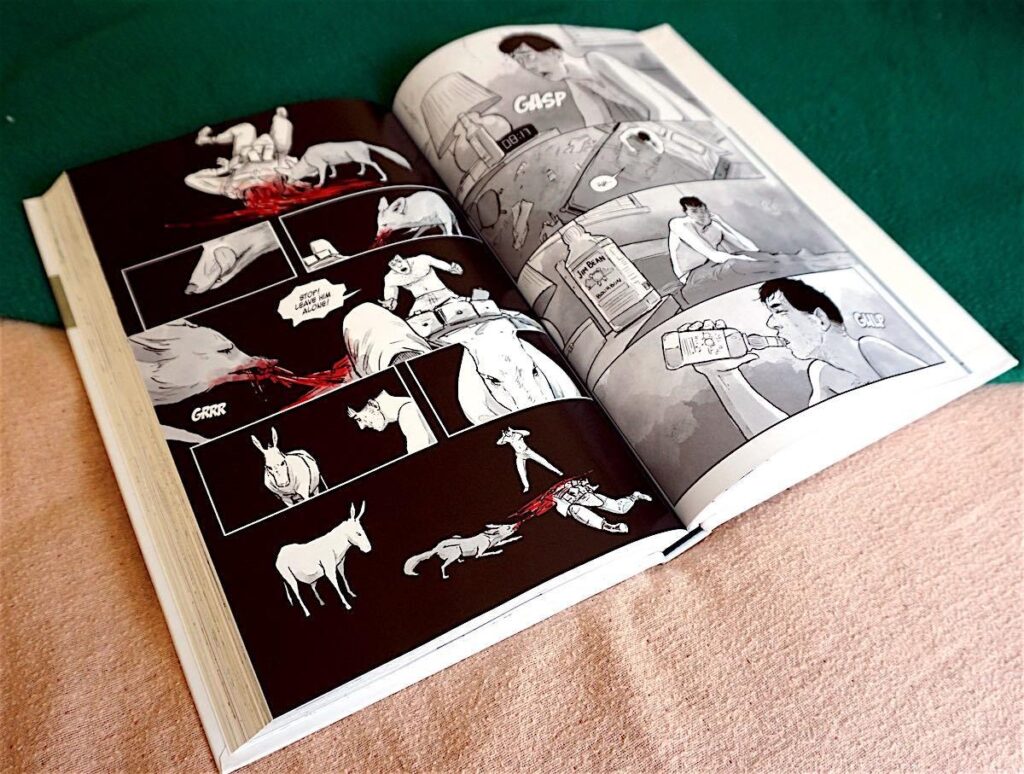
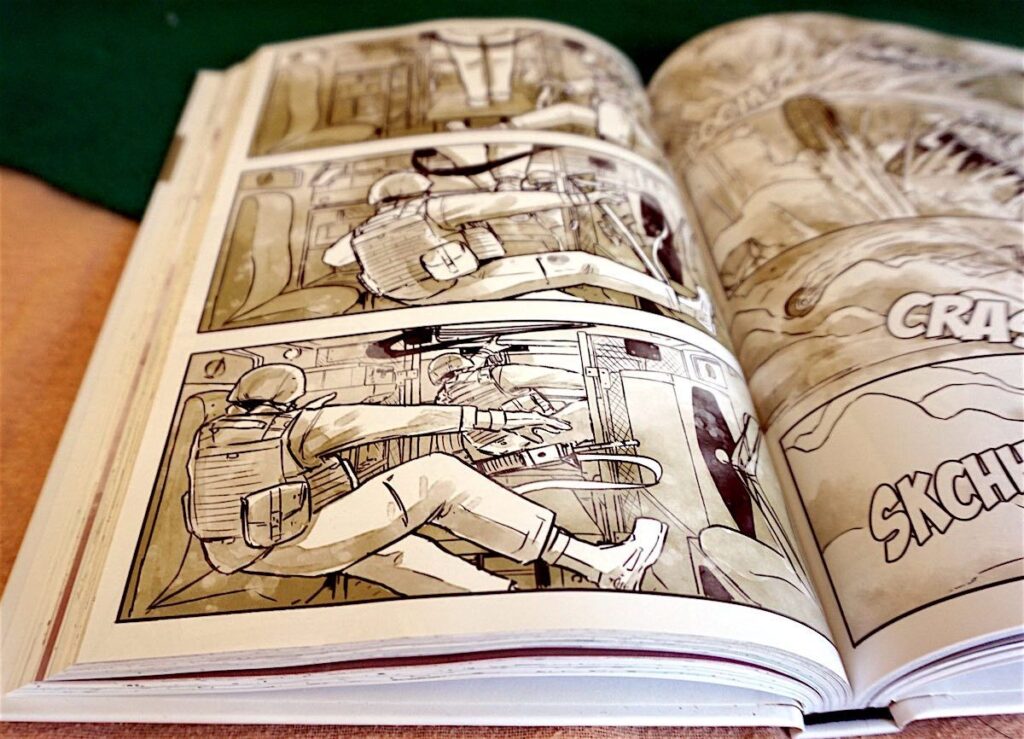
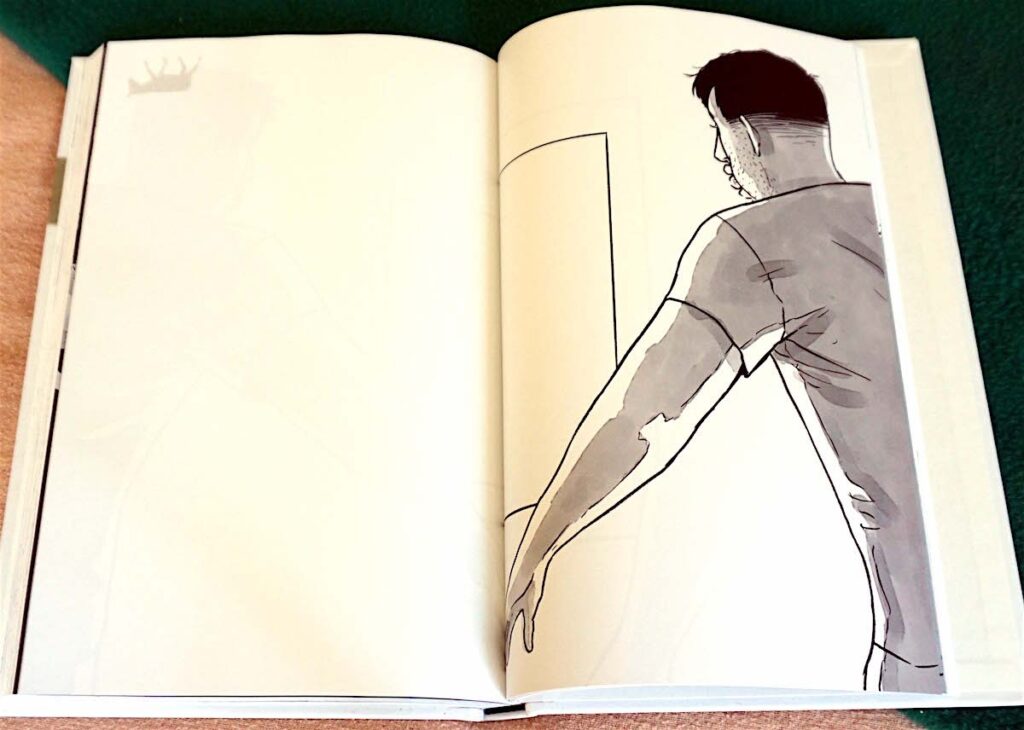
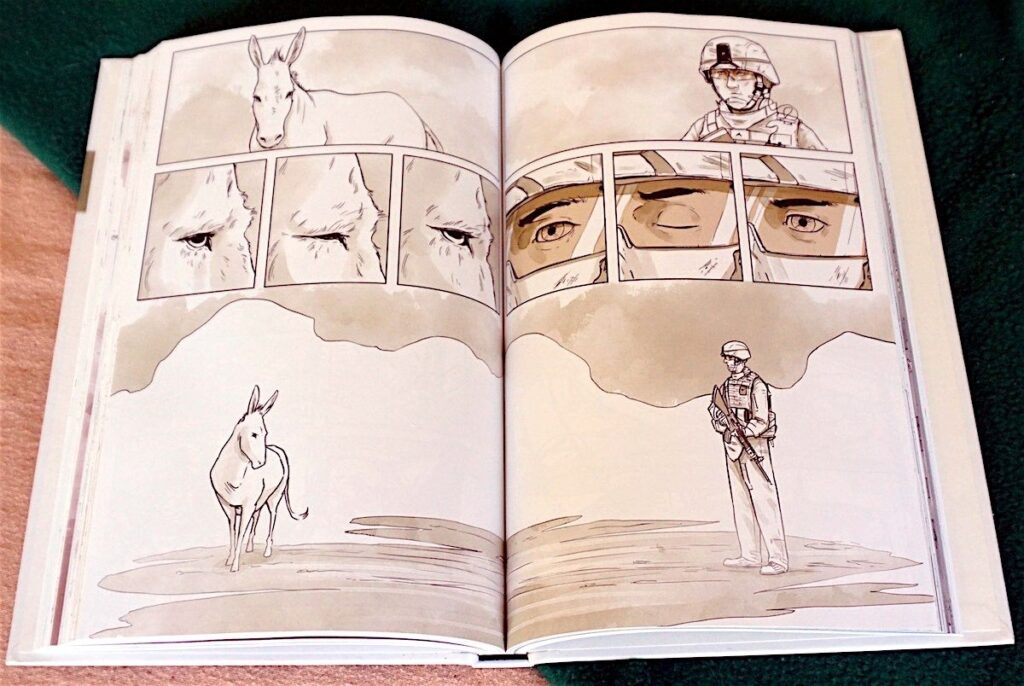
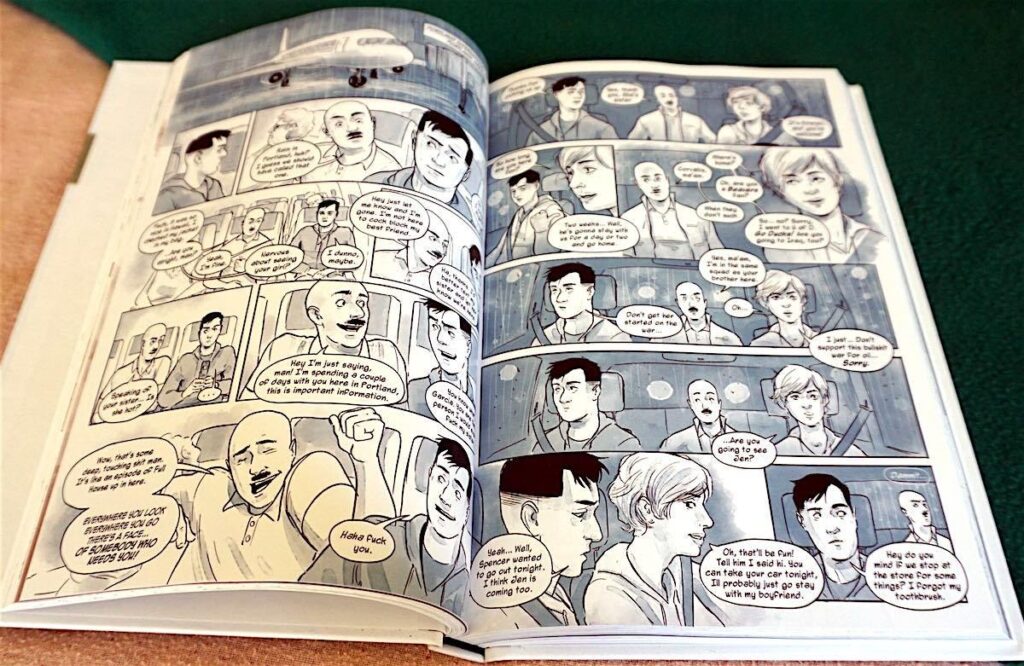
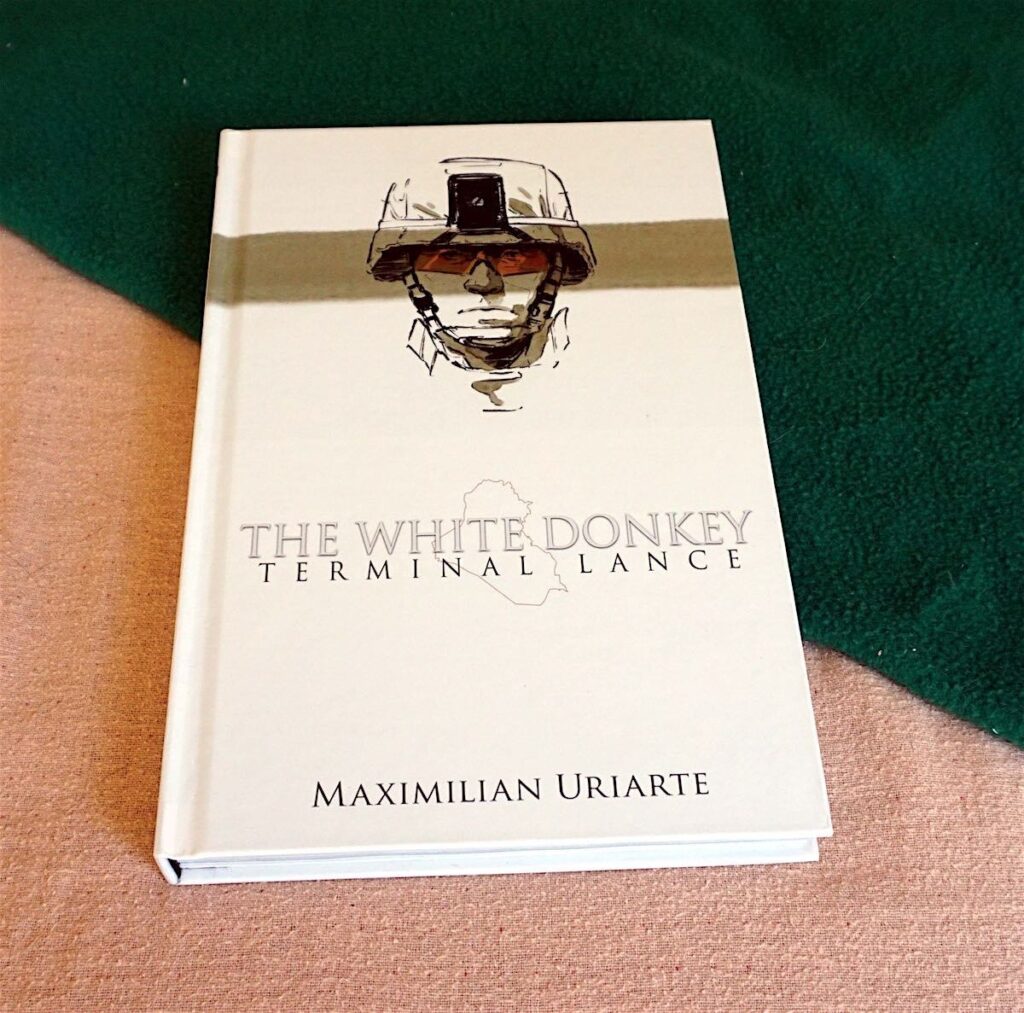
The White Donkey: Terminal Lance
by Maximlian Uriarte
Little, Brown and Company
2016, 288 pages, 7 x 10.5 x 1 inches
Maximillian Uriarte served four years in the Marine Corps infantry and went on two combat deployments to Iraq. While on active duty, he created an online comic strip, Terminal Lance, which grew from a small following to being published in official armed forces publications. In The White Donkey, which he calls his “thesis project,” he tells a story about the existential crisis of the military experience and what it means to enlist during a time of war. Subjects like hazing and PTSD are covered in the course of the story as he explores what might drive a Marine to suicide.
We follow Abe, a young, white middle-class kid who enlists after high school for want of a direction, trying to find something better to do with his life. He makes a friend in another “grunt,” Garcia, who’s there because there are no better paths for him. The contrast is stark. Garcia: “I didn’t have shit else going for me, you know? I was with the wrong crowd a lot, I’d probably be in prison by now if not here.”
Abe’s privilege is shown by his encounter with an Iraqi policeman who tells him: “I have met many of your type over the last few years, coming here to fulfill some personal conquest, but you never stop to think about how arrogant you are. You seek some enlightenment at the expense of my people.” The story follows Abe through training, his experience of the tedium of war, his need for validation and legitimacy in the eyes of fellow Marines, and finally, the horror of combat and the alienation of the returning veteran into his previous society. There are encounters with the locals, mistakes made, and the surreal encounter with the White Donkey, which holds up an entire column of armored vehicles as it plods slowly along in the middle of the road.
The art employed in The White Donkey is minimalist, stylized and realistic. Uriarte makes excellent use of color and story-board style to convey dramatic scenes. He makes use of color washes to separate different episodes of the stories. The pages of boot camp and training in Hawaii is a verdant green, Abe’s trips back to the civilian life is rendered in shades of blue-gray and the scenes in Iraq are in shades of brown and olive. White space is deliberate and used to great effect.
The language is punctuated with frequent profanity and the story is spiked with humor that is at times bitter and obscene. In other words, situation normal for a story set in today’s armed forces. This book hits you right in the gut. If you’ve ever wondered what it’s like to serve in the Marine Corps and the experience of deployment in a war-torn country like Iraq, this book will help you understand. – Carolyn Koh
11/11/2510 November 2025
Utensils
Tools for Possibilities: issue no. 163
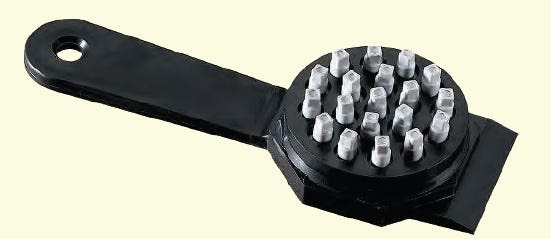
Quick fish cleaner
Sure, you can scale a fish with the back of your knife blade. I did for years — until I drove my thumb into the dorsal spike of a striped bass. After having surgery, I picked up this little device at the tackle shop. It offers more than self-defense. It’s just absolutely good at what it does, and costs less than ten bucks. Show it to your friends and make them guess what it’s for; they’ll be stumped. What would make you design a fish scaler with what looks like plastic hex-head bits loosely attached to the underside of a circular disc? It doesn’t make sense. But it works! It defends your thumb (thank you) and prevents scales from scattering all over and flying up into your face. Only a little pressure is needed, and the fish is completely clean in seconds. — Jay Allison

Essential pot and pan scraper
Norpro Comfort Grip Deluxe Scraper
I am the kitchen staff in our household: cook, dish- and pot-washer. We are suspicious of non-stick cooking surfaces, so all of our pots and pans are steel, enameled iron or cast iron. No matter how much care I take in seasoning pans or paying attention to my cooking, I invariably end up with something stuck to the bottom of something at least once a week. Witnessing my frustration at having to soak, wipe, and then scrape with tools designed to do other things besides remove cooked-on food, my wife said, “Why don’t you get one of those plastic scrapers like my mom used to have?” I scoffed at first, never having heard of this kind of thing (growing up as I did surrounded by Teflon).
We found a scraper at an upscale kitchen store and gave it a try. This first scraper (Norpro 239) was cheap and flimsy and visibly wore down over a month of vigorous scraping, but it was still a revelation. Then I found this thicker scraper and I am quite impressed by its simple, sturdy functionality. After almost a year, it’s just starting to wear, and it kicks potwashing butt on almost a daily basis. It also comes in fun colors!
Unlike other, similar products, this scraper is significantly thicker in the middle than at the edges, making it rigid in use with a little bit of flexibility where the edge meets the pot or pan; it also has a rounded handle along the top edge (mimicking the handle of a European dough scraper) that fits securely along the inside of your index finger. These two features give it a really nice hand-feel, which is something I appreciate in any tool, even a mundane pot scraper. Its best feature, though, is the gradual curve on one scraper edge and the sharp curve on the other, making it useful for saucepans with rounded bottoms as well as square-bottomed pots or brownie pans.
We bought a bunch of these (they are pretty inexpensive) and will often give one to friends, house guests, and family members who express even the slightest curiosity. The gift is invariably met with a quizzical look, but almost every one we give one to contacts us later to tell us how amazed they are that they lived this long without it. —Jeff Morrison
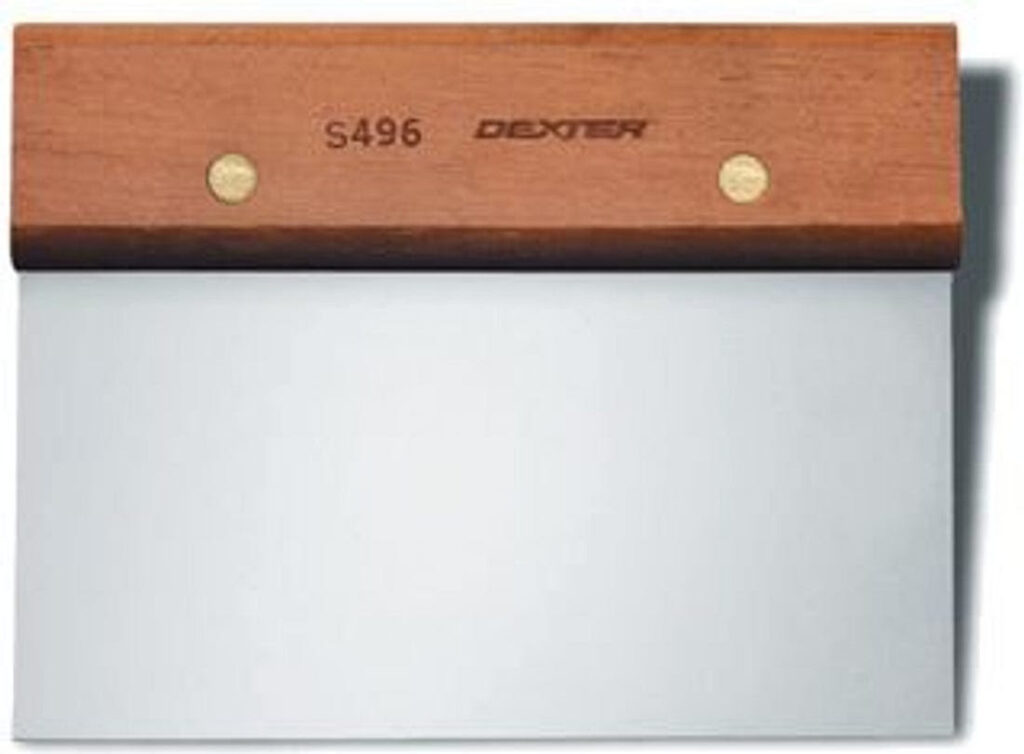
Dough Scraper
Although it was designed specifically for bakers, this low-tech tool is absolutely indispensable in the kitchen. Beyond scraping bread dough off the counter, we use ours to transport all types of chopped foods from counter to bowl, counter to skillet, etc.
There are other dough scrapers out there, but Dexter-Russell’s S496 features a wide wooden handle that helps make it the best. Don’t want to take my word for it? I was in a local Sur la Table recently. They had various bins filled with dough scrapers; the Dexter bin was empty! — Mark Esswein
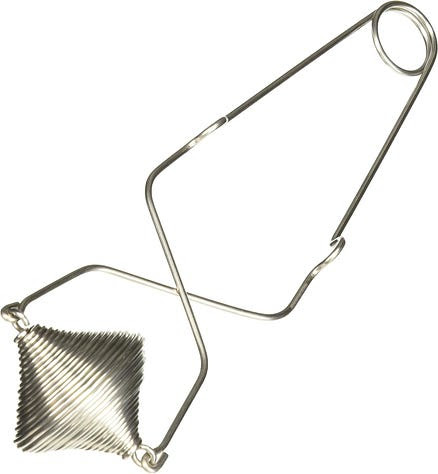
Evenly floured surfaces
This flour duster allows for remarkably light and even dusting of dough or a work surface. You simply squeeze the wire handle, which expands the spring bulb so that the wires have space between them. Stick it in a bag of flour, stop squeezing and the spring bulb closes around a golf-ball-sized wad of flour. Then, shake it over a work surface squeezing gently — I tap it over my free hand ala David Byrne’s “Once in a Lifetime” — and voilà: A very even dusting is achieved. I’ve used this flour duster for five years, and have found nothing else that can compete. — Robert Narracci

Portable pepper mill
Vic Firth Pump and Grind Pepper Mill
I never go anywhere without my portable pepper mill. I have one stashed in my desk and another in the glove box, and still another couple in the kitchen. Trader Joe’s sells an outstanding disposable model for a couple bucks, but by far my favorite is the thumb-operated pump mill made by Vic Firth.
The sleek designed cylindrical metal and glass device stands 5-1/2-inches tall, and you can tell from its weight that it’s a serious tool. Fill the tube with peppercorns, push the plunger, and presto! Delicious, calorie-free pepper. — Andee Beck Althoff
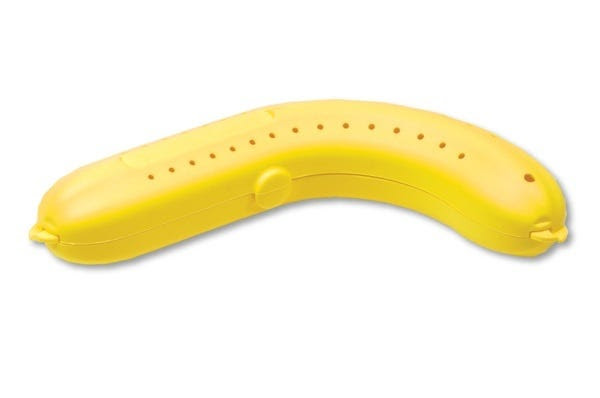
Better banana protection
Most parents would agree that the venerable banana is a staple of the toddler diet. Unfortunately, they tend to not to fare very well when tossed into a diaper bag filled with wipes, water bottles, and the other dizzying array of items that have to be hauled around everywhere with your little ones. The Banana Guard makes this problem go away completely.
We were given one of these shortly after our daughter was born, and two years later, it goes everywhere with us. The sturdy, BPA-free container protects bananas in even the most overstuffed of diaper bags, and there’s something particularly ingenious about the size and shape: I’ve yet to encounter a banana that didn’t fit.
The ventilation holes help keep the banana fresh, and while the locks can be opened fairly easily, they won’t accidentally pop open if the bag is tossed about, or if the guard is discovered by a curious toddler.
Of course, this isn’t just for kids. When I eat bananas on the go the Banana Guard is the answer. The $15 price tag is perhaps a little steep, but the guard is definitely built to last and in the long run probably costs less than all the bananas you might lose otherwise. — Darin Wilson
Once a week we’ll send out a page from Cool Tools: A Catalog of Possibilities. The tools might be outdated or obsolete, and the links to them may or may not work. We present these vintage recommendations as is because the possibilities they inspire are new. Sign up here to get Tools for Possibilities a week early in your inbox.
11/10/2509 November 2025
Other minds / 102 lessons / No-hole poster hanging
Recomendo - issue #487
Newsletter for creative professionals
One of my favorite newsletters for creatives is Jane Friedman’s Electric Speed. Jane is a publishing industry expert who generously shares her wisdom and recommendations. Every two weeks, she sends out Electric Speed, offering digital tools, resources, and advice for creative professionals, especially writers. Each issue feels hand-curated, personal, and encouraging, and I always find something useful. Here’s a link to her archive. — CD
Other minds
Neanderthals were more closely related to us than we had been taught by modern culture. They had language, fire, buried their dead, made ornaments and simple tools. I really enjoyed the book Kindred: Neanderthal Life, Love, Death, and Art, which lays out all the evidence we have about our country cousins, and what may have happened to them. It is well written and deep. I am reading about the other sentient beings our ancestors met, because AIs are not the first time we’ve had to deal with other intelligences. – KK
Buying back your time while traveling
Japan or Die, one of my favorite newsletters, is all about traveling in Japan. The advice applies to travel anywhere in the world, not just Japan. The recent issue has an article about “buying back your time while traveling,” with tips to help you avoid wasting time on negative experiences (not flying direct, not waiting two hours for “ramen that is only marginally better than another ramen joint a half a block away”) so you can “waste” time on “lingering at a cafe, watching the sun set, chatting with locals, and purposely getting lost just to see what you’ll discover.” — MF
Political thriller
The Netflix movie A House of Dynamite is well worth watching despite its annoying lack of a climax or resolution. It is a fast 2 hours. You are present in the believable reality of a nuclear missile crisis to see how actual humans behave amid the fog of chaos and lack of information. The authentic details and open ending are meant to get you questioning the whole system, and you do. It is a thrilling ride until the end. – KK
Damage-free poster hanging
This video shows the best way to hang posters without damaging the walls or the posters. Use painter’s tape to secure four paper clips to your wall, positioned at the corners where your poster will hang. Then sandwich your poster between small magnets and the paper clips. Unlike poster putty or command strips, this leaves no residue, doesn’t tear the poster, and is completely reversible. It’s also easy to adjust the poster if it is slightly tilted. — MF
102 Lessons from the 102 Books
I love when others synthesize what they’ve learned and share lists like these—102 Lessons from 102 Books, organized by theme. Here are a few of the insights:
- On Focus: Even having a phone nearby reduces our mental bandwidth and makes us seem less attentive in conversations.
- On Reflection: Asking yourself “what went well?” at the end of the day can give you a big boost to your happiness.
- On Outreach: Friendliness is irrationally undersupplied. In one study, subjects were asked to either stay quiet or talk to a stranger during their commute. People predicted they’d prefer solitude, but they enjoyed the conversation more.
Discovered through Johnny Webber’s blog. — CD
Sign up here to get Recomendo a week early in your inbox.
11/9/2506 November 2025
Better Travel Pillow/Set Jetting/Top Expat Countries
Nomadico issue #178
Versatile Travel Pillow
I’ve tried my share of airplane pillows over the years and most often have just carried a camping pillow half-inflated because that can also double as a seat cushion elsewhere. I don’t like the typical airport ones because they’re bulky and push your head forward instead of supporting your chin. I purchased this inflatable Modern Age one to take to Patagonia and back and liked it though, so it’s currently in use as this newsletter goes out while I fly across the Atlantic. You can wear it multiple ways and it solves the chin problem if you flip it over and around. Plus while I thought the included hood was kind of silly, I used it instead of an eye mask when one flight got really frigid and the vents were blasting cold air.
My Pre-packed Toiletry Kit
I always feel a little stressed when packing the day before a morning flight’s departure, but it’s gotten a little easier since I realized I could just buy two of everything and have a toiletry kit that’s packed and ready to go each time. It has a smaller electric toothbrush than I use at home (mentioned earlier here) and second versions of floss, toothpaste, face cream, comb, nail clipper, etc. in TSA-friendly sizes. The only thing I add/remove is a larger sunscreen bottle if I’m checking a bag and headed to a beach.
Data-backed Trends in Travel
Expedia and a few of its partner companies released their annual travel trends report recently and since this one is backed by search and booking data, it’s worth paying attention to for what’s really happening. The destinations seeing the biggest increase in searches are a mixed bunch: the top 5 were Big Sky, Okinawa, Sardinia, Phu Quoc (Vietnam), and Savoie (France). Other trends they highlight included “salvaged stays” in repurposed buildings, “hotel hops” of staying in different places, and “set jetting” — exploring places where movies were set or filmed.
Top Asian Countries for Expats
When more than 10,000 expats gave their opinions in the most recent International Expat Survey, 5 of the top 10 destinations were in Asia. Latin America still wins the medals with the top 3, but Thailand, Vietnam, Malaysia, China, and Indonesia all made the top 10. No surprise since you’ll run into hundreds of expats in Chiang Mai, Da Nang, or Penang, but it’s interesting to see China showing up so highly. “Convenience is a recurring theme, with expats across China raving about fast public transportation to efficient online shopping.” See the full story here, with a link to the source material.
A weekly newsletter with four quick bites, edited by Tim Leffel, author of A Better Life for Half the Price and The World’s Cheapest Destinations. See past editions here, where your like-minded friends can subscribe and join you.
11/6/2505 November 2025
What’s in my NOW? — Ken Batchelor
issue #229
I’m an avid reader and walker, a poet and wannabe adult (when I have to be). I retired early from the medical industry to care full-time for my parents (Dad 92, Mom 89), who I’m fortunate to still have with me. Namaste. — Ken Batchelor
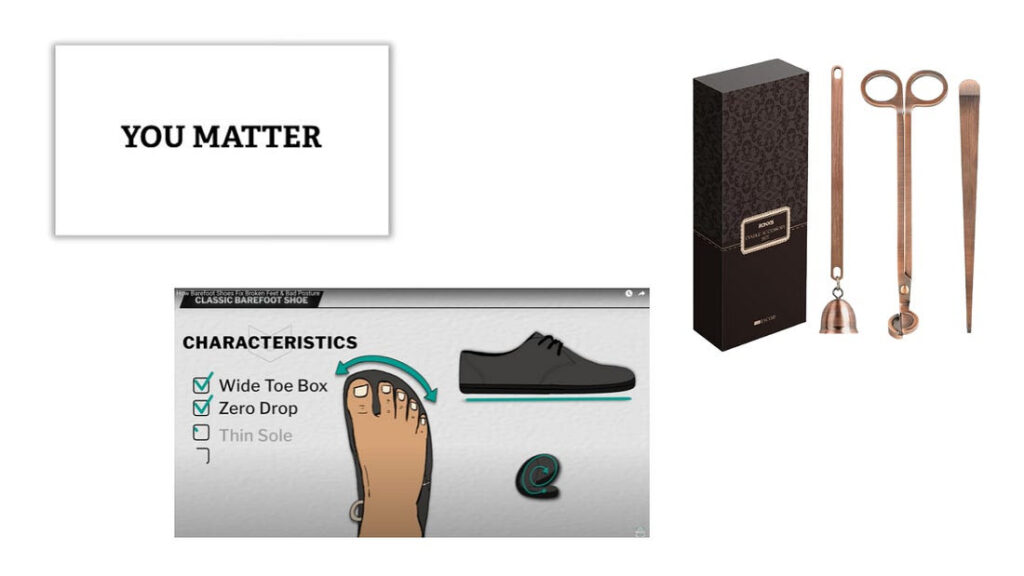
PHYSICAL
- You Matter Cards. You Matter cards are business cards that say “You Matter” on them, plain and simple. They come in various designs and are a “powerful way to spread kindness, compassion, and gratitude with others.” I carry several in my wallet and pass them out at every opportunity…to the waitress at the restaurant, to the nurse at the Red Cross, to the checkout person at the grocery store, to the patient sitting next to me in the waiting room.
- Barefoot Shoes. A category of shoe that features zero lift, zero arch support, and a wide toebox to allow your feet to do what they’re supposed to without being constrained or artificially supported. I discovered these in 2022. I’m an avid walker and routinely go barefoot indoors (a habit I picked up from my sister), so barefoot shoes intrigued me. Three years on, my feet, ankles, and calves are stronger than ever, and my former non-barefoot shoe collection has been donated.
- Candle Accessory Kit. I love to burn candles and incense around the house. This kit includes a candle wick trimmer to keep your wicks short for better-controlled burning, a candle snuffer for extinguishing tapered candles, and a candle wick dipper. A wick dipper is a little hunk of metal with a crook on the end that allows you to submerge a lit wick into the pool of melted wax at the top of a pillar candle and extinguish it absolutely smokelessly. You can then use it to straighten the wick back up, now with a coat of wax on it, which will make it burn without sputtering the next time you light it. It may be old hat for some folks, but it took 61 trips around the Sun before I discovered this ingenious tool.
DIGITAL
- LibraryThing. A terrific online service for cataloging books. You can tag and classify them as you wish, keep track of which books you’ve read, and pore over reams of charts, statistics, and information about your library. LibraryThing is a massive resource on books, editions, authors, cover art, you name it. They offer discussion boards and contests. They even provide an app to help you scan the barcodes on your books as you get started, which makes it easier and quicker to work your way down your shelves. They’re currently celebrating their 20th birthday.
- AlphaGuess. A minimalist word game where you guess the word of the day by determining “where it sits” in the alphabet. Simple but addictive. One game per day. My sister and I play it every morning and share our scores.
INVISIBLE
Listening for the sound of the anklets on the feet of an insect as it walks.
From Philip K. Dick’s autobiographical essay in his short story collection “The Golden Man”:
“Kabir [the Sufi poet and mystic]…wrote about the sound of ‘the anklets on the feet of an insect as it walks.’ I would like to hear that sound; perhaps if I could my anger and fear, and my high blood pressure, would go away.”
My doctor prescribes atenolol for hypertension. It does the job I guess, but somehow I think hearing that sound would be a magical de-stresser, so I keep a spiritual ear out when I’m not running “madly off in all directions.”
Sign up here to get What’s in my NOW? a week early in your inbox.
11/5/2504 November 2025
Free Press / Building Stories
Issue No. 91
FREE PRESS – A PICTORIAL HISTORY OF UNDERGROUND NEWSPAPERS 1965-1975
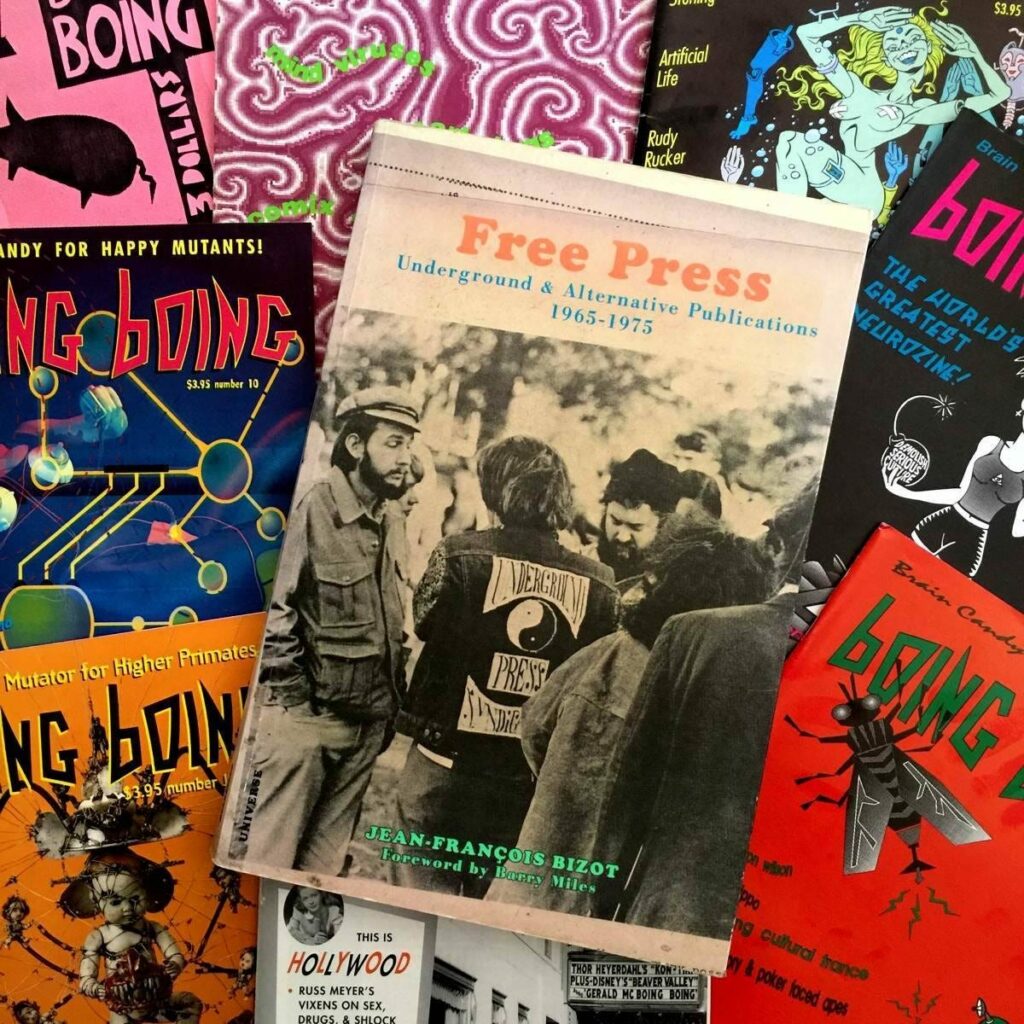

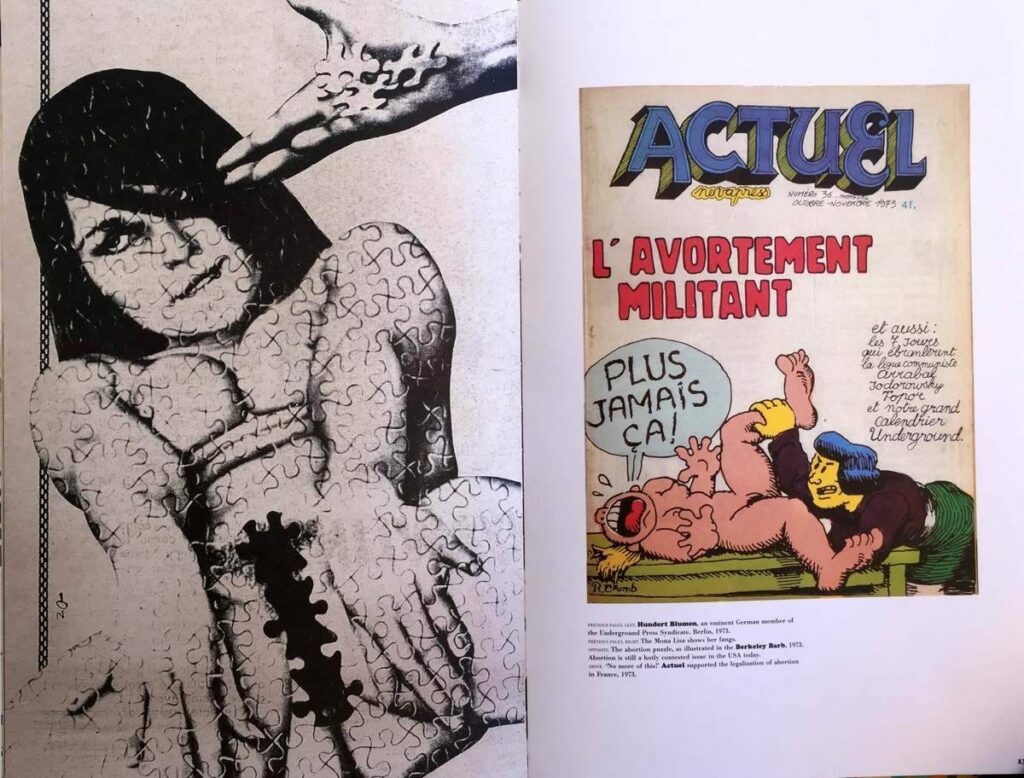
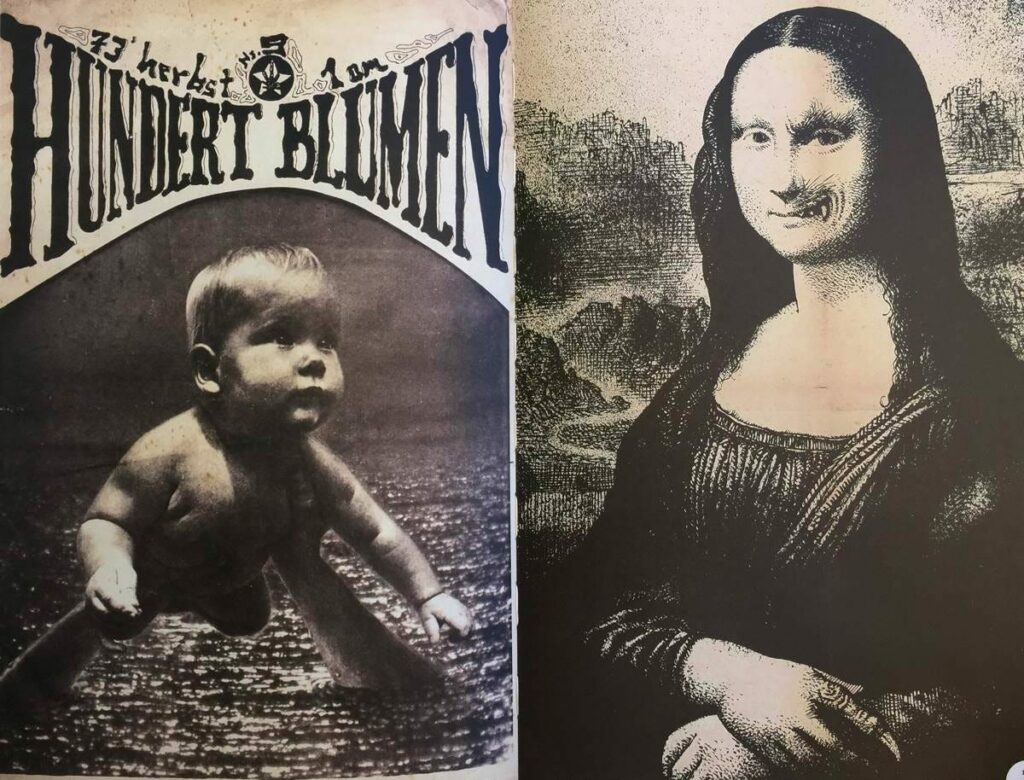
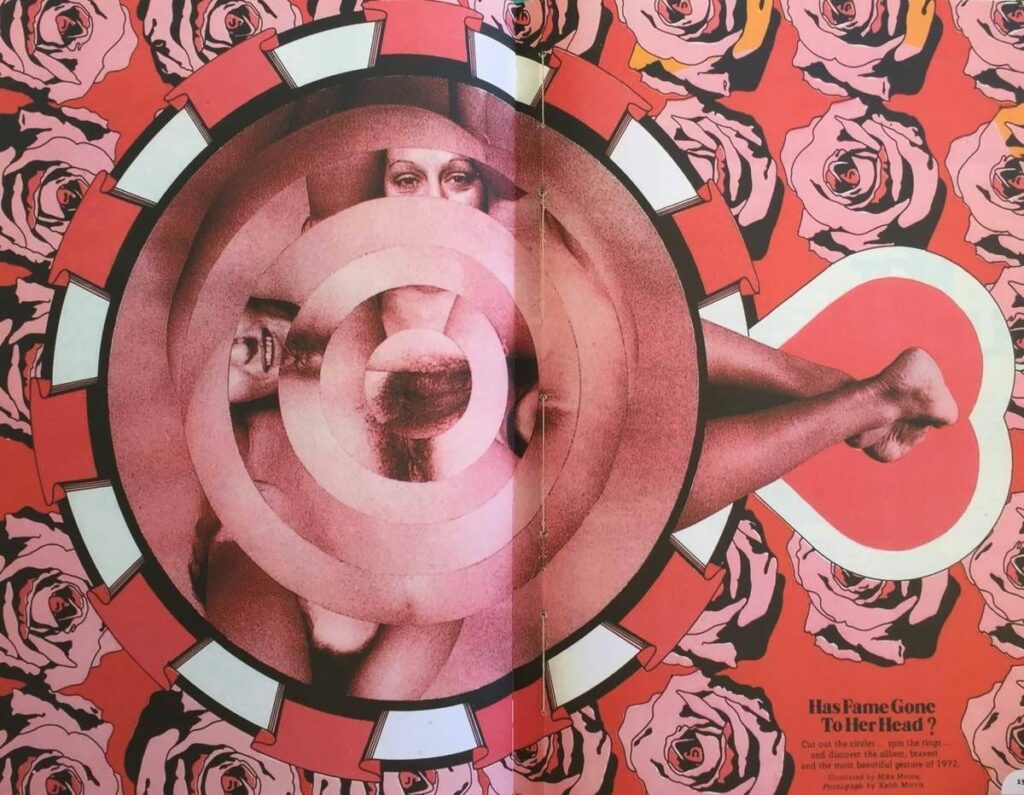
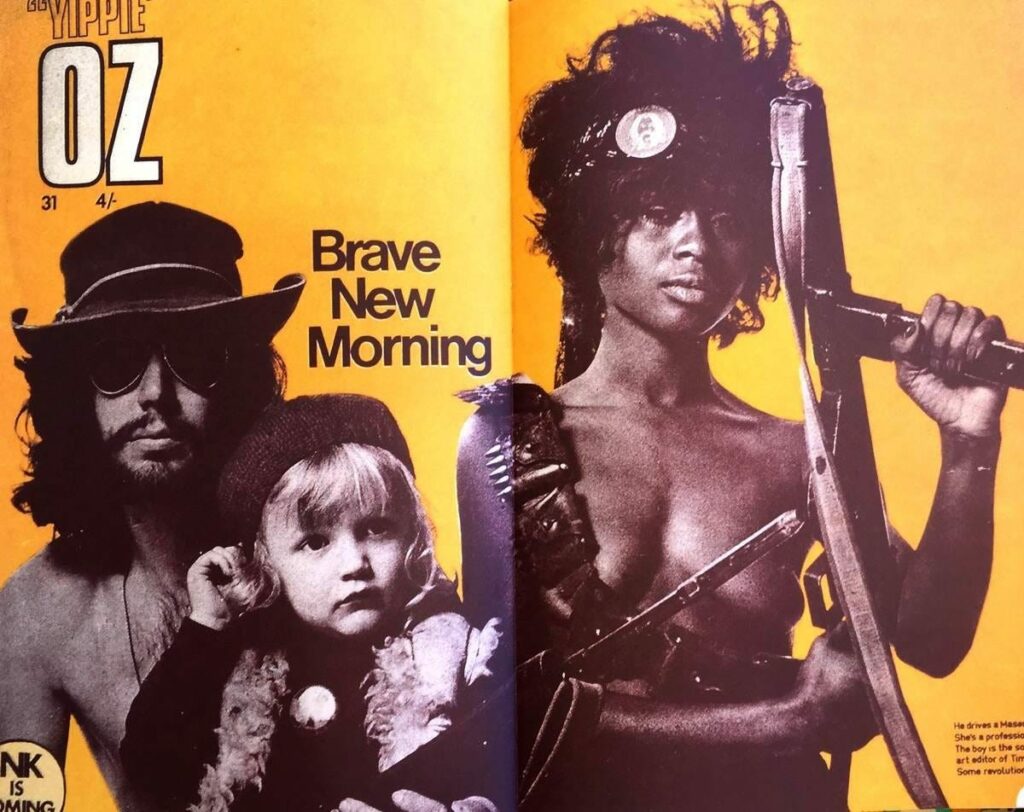
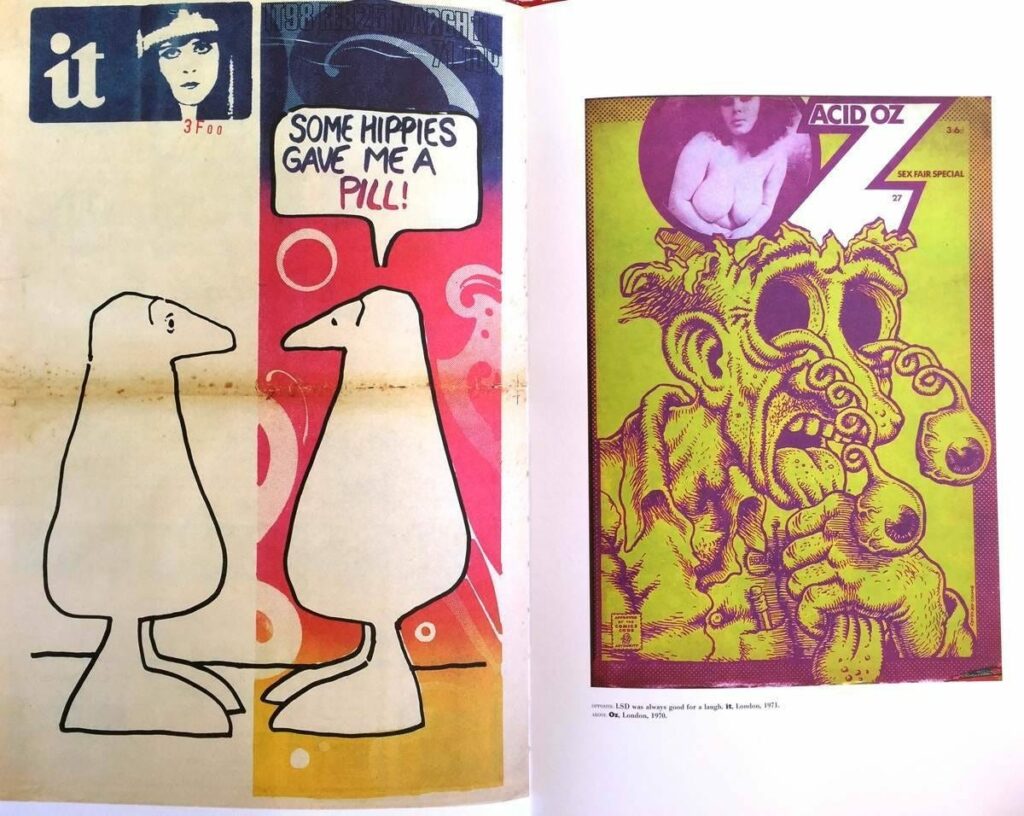


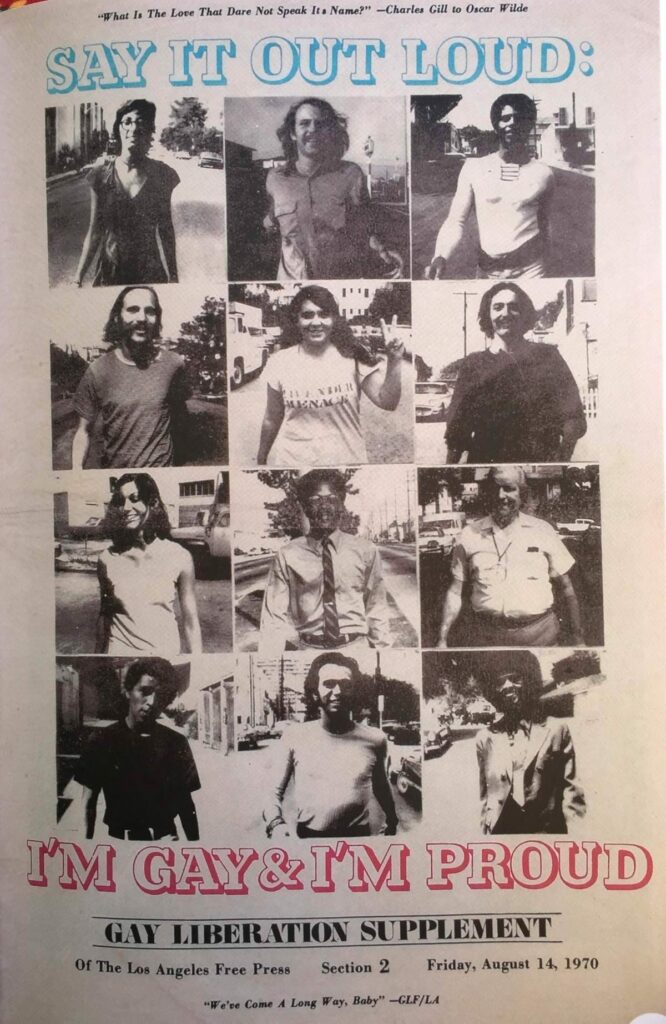
Free Press: Underground & Alternative Publications 1965-1975
by Jean-François Bizot (editor)
Universe
2006, 264 pages, 9 x 1.1 x 13.5 inches (softcover)
The mid-1960s were an exciting time for art, music, youth culture, society, and politics, all of which were transforming at dizzying speed. The left wing underground press of the time reflected these mind-boggling changes in their design, content, and distribution methods. Underground newspapers from around the world joined the Underground Press Syndicate, sharing articles and illustrations free of copyright restrictions.
These papers gleefully taunted the establishment by promoting recreational drugs, recreational sex, black power, gay rights, women’s liberation, anti-authoritarianism, and anti-war activism. The covers of the papers were bold, experimental, and subversive. When I was designing bOING bOING (the late 1980s/early 1990s zine) I was inspired by the precious few samples of The East Village Other, The Realist, and The Gothic Blimp Works that I could find in used bookstores. I wish I’d had a copy of Free Press back then! Almost every page of this book has a full-color photo of a cover or interior page from dozens of well-known and obscure newspapers from the era. Though much of the design is amateurish and ugly, there are examples of brilliance, too, making this a worthy reference for designers.
– Mark Frauenfelder
BUILDING STORIES – CHRIS WARE’S MAGNUM OPUS INCLUDES 14 LAVISHLY PRESENTED STORIES IN DIFFERENT FORMATS, ALL IN ONE BOX
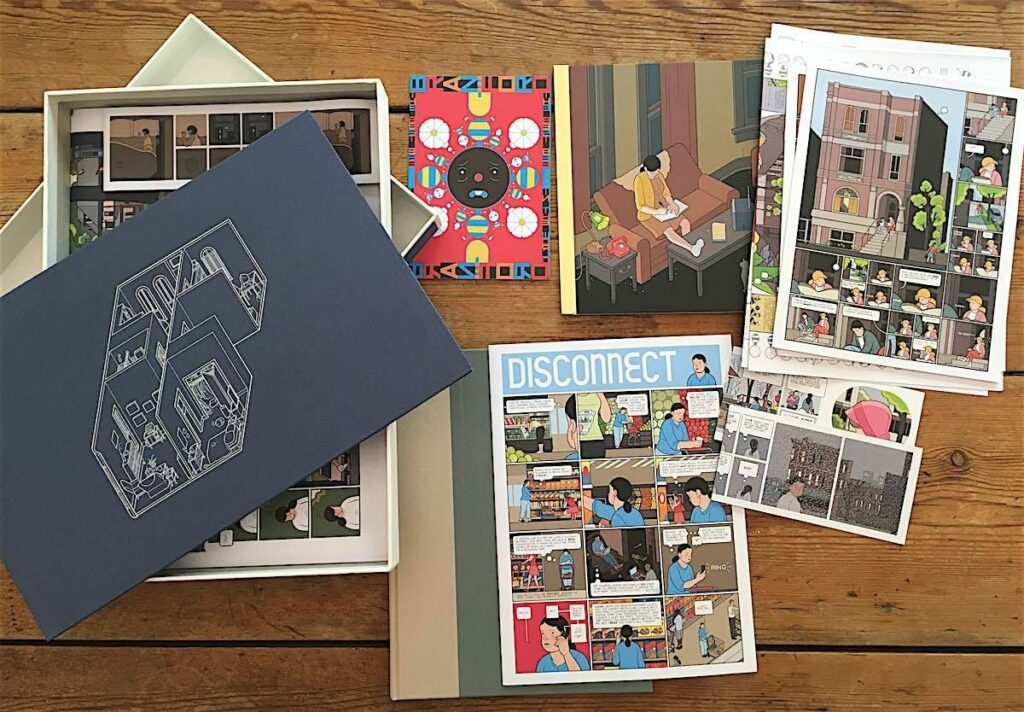
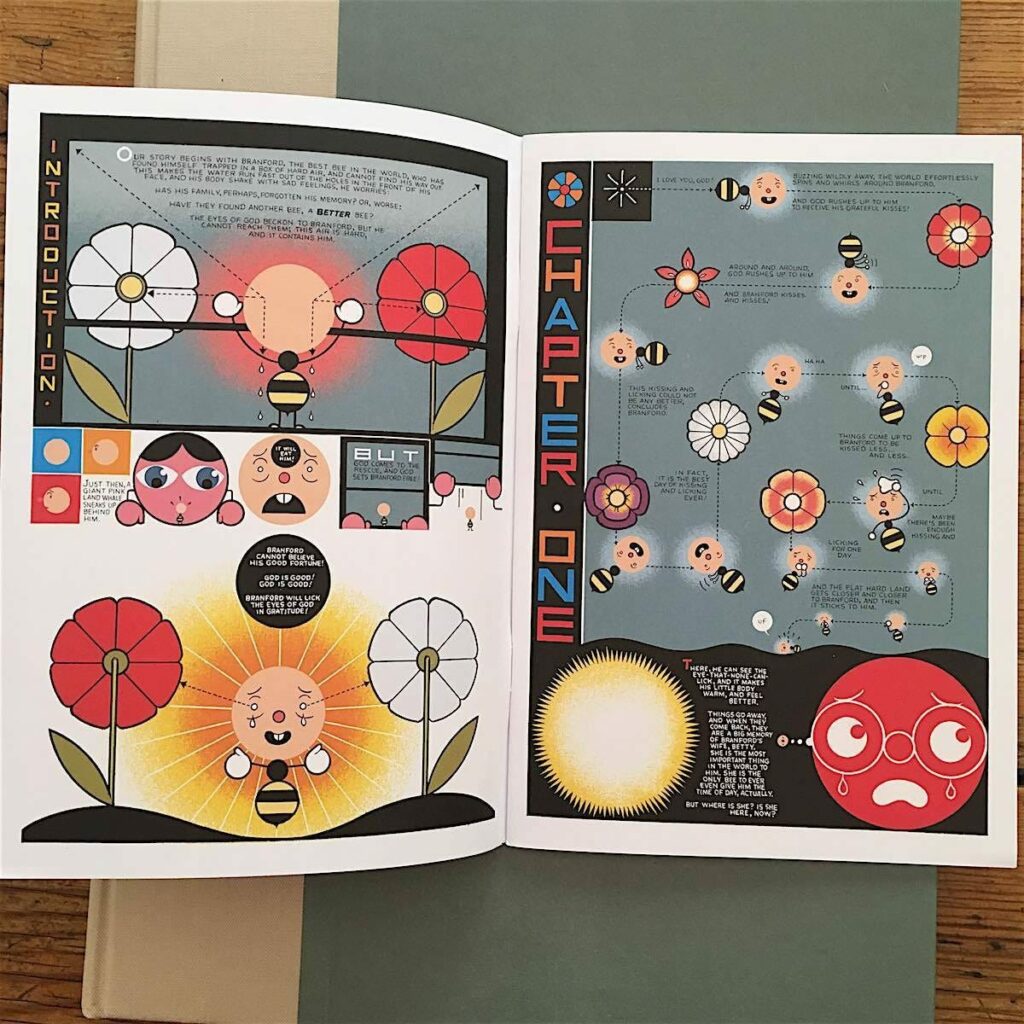
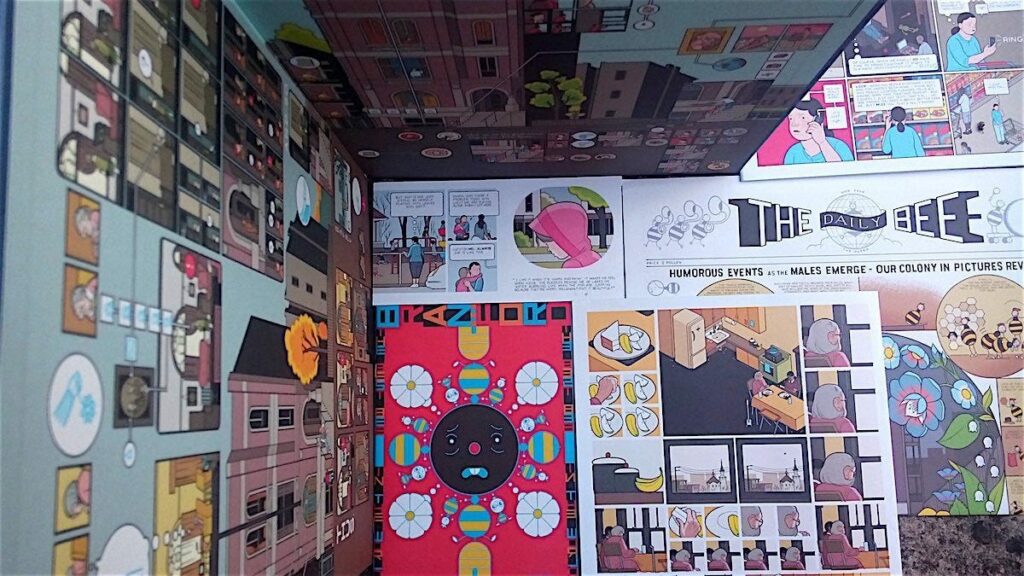
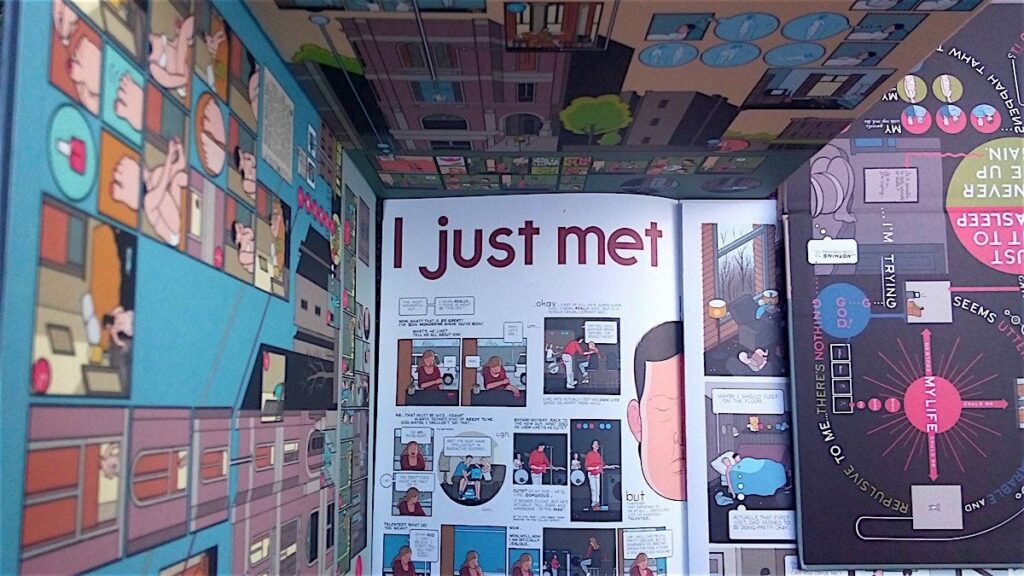
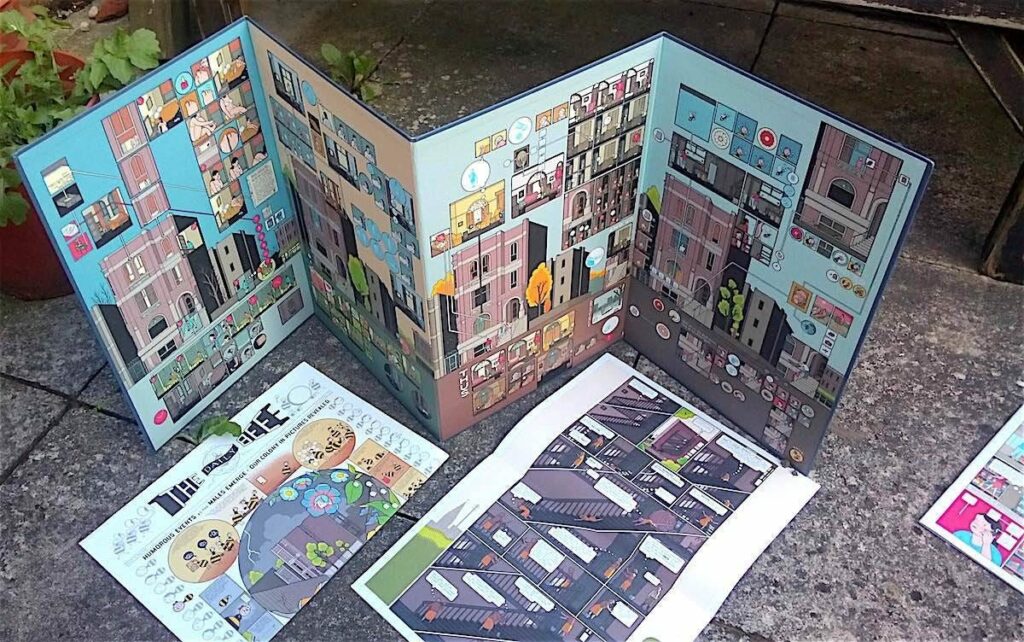
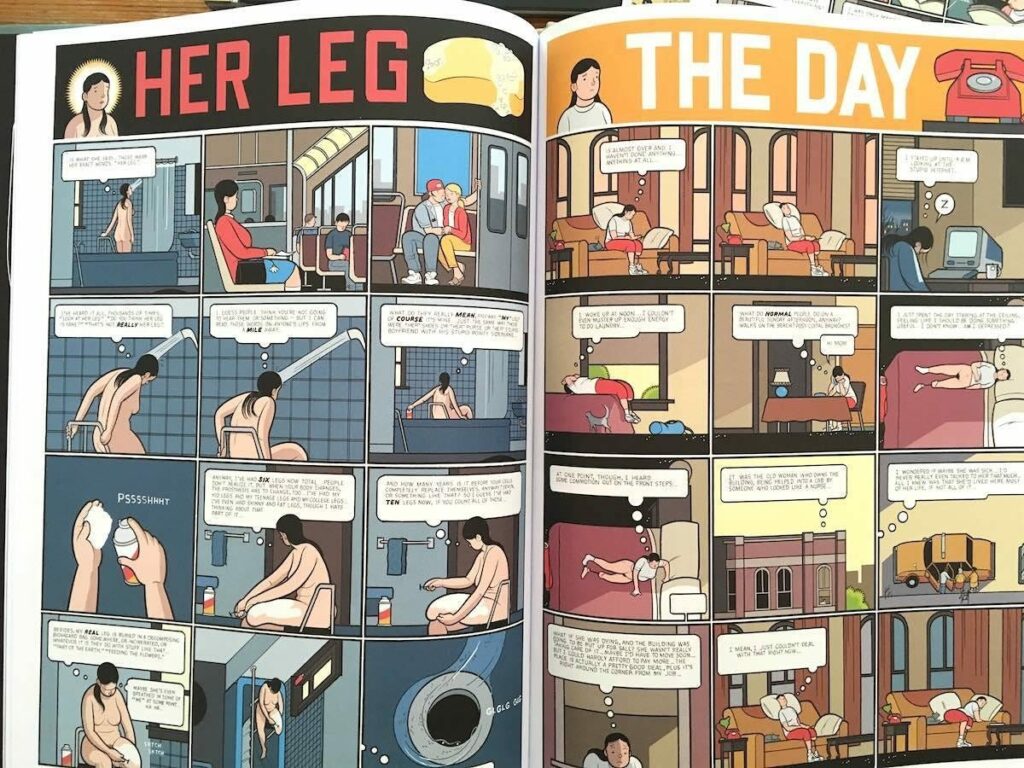
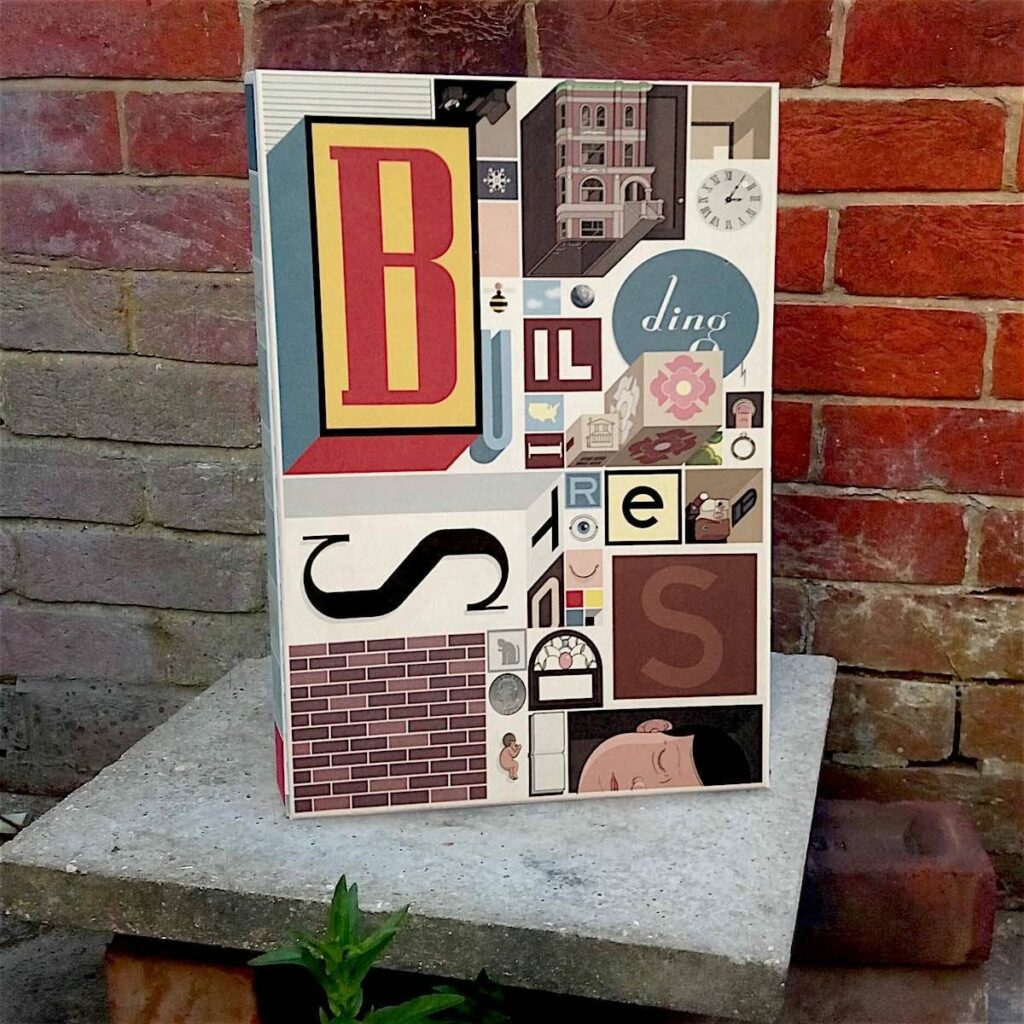
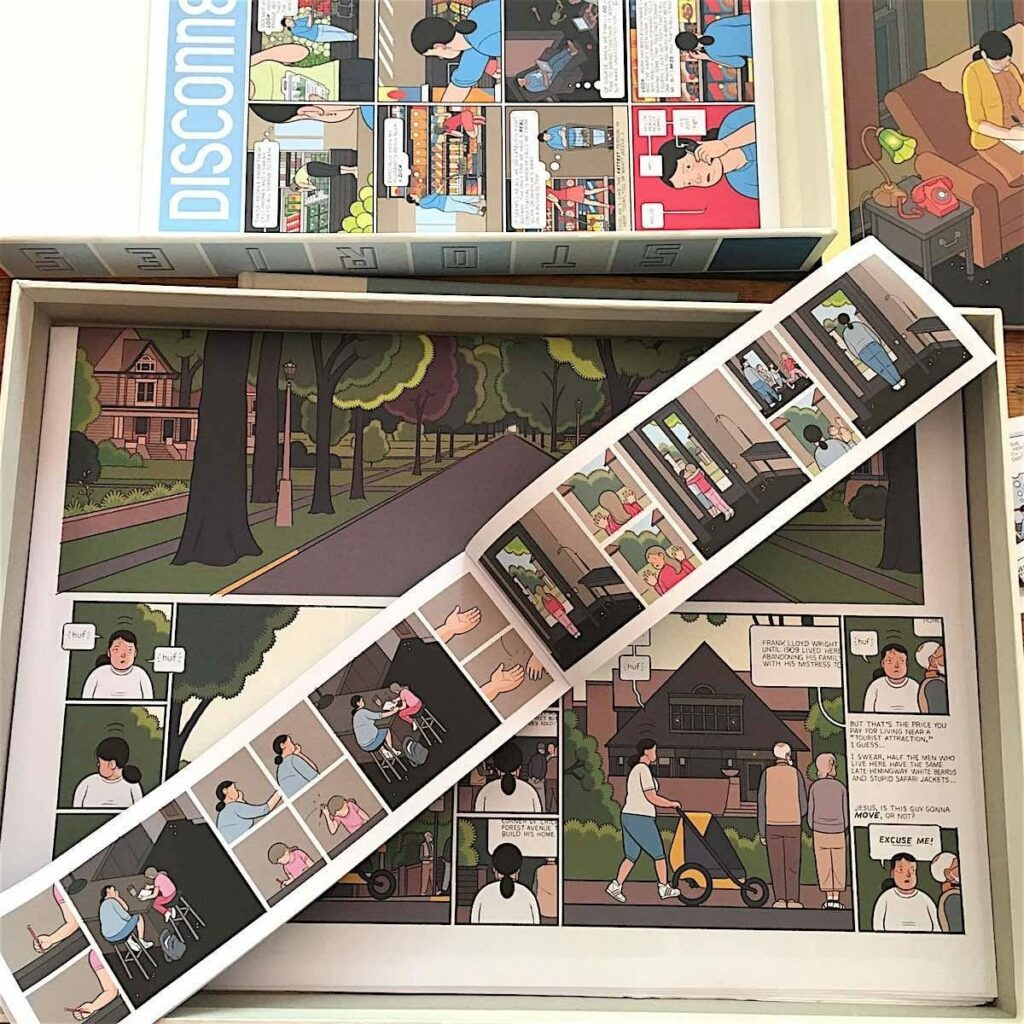
Building Stories
by Chris Ware
Pantheon
2012, 260 pages, 11.7 x 16.6 x 1.9 inches (hardcover, softcovers, boxed)
Chris Ware is renowned as the kind of comic artist who makes you expect more from the genre. For nearly three decades, his unfussy, formalized style has given birth to cult strips such as Rusty Brown and Quimby The MouseM. Despite his style being modeled after the simplicity of Tintin in order to express emotion in as universal a way as possible, his style is a vehicle for the minutiae of human struggle. Building Stories is no different.
Largely comprised of strips previously published in national newspapers, but also featuring unreleased material, Building Stories is Ware’s magnum opus – 14 lavishly presented stories in one beautifully designed box, itself adorned with extra strips and illustrations. The separation of the stories into physically distinct objects is intended to allow the reader to acquaint themselves with the characters in any order they choose.
Revolving around the lives of the inhabitants of an apartment block in Chicago, his pet themes of social alienation, excessive rumination and the pervasive feeling of being railroaded by mundanity are all present and correct. A number of archetypes populate the building – the lonely old lady, the bickering couple, the single young woman, but Ware imbues each with its own identity.
Arguably the most prominent character is the young woman who has a prosthetic leg, observed at various unassuming yet pivotal moments in her life, whether she’s summer house sitting, lying awake at night thinking of her newborn child, or trying to overcome her anxiety in a writing class. It is tough not to feel empathy for her directionless existence, constant anxieties over wasted potential and the recursive spikes of past trauma. A soap opera in the best sense, there is more than a touch of Charles M. Schulz about Ware’s existentially preoccupied, neurotic characters.
Ware also experiments with layout to sometimes dizzying effect. The effusive nature of Branford the Best Bee in the World is matched by spiraling circular panels, whereas our aforementioned heroine wearily lives out her life inside row after row of regulation size square panels.
The presentation of the strips in wildly differing formats makes this a true collector’s package – pamphlets, news sheets, hardback book, comic on a fold-up “game board,” and more. If you happen to be looking for the graphic novel’s answer to Ulysses, then look no further. If not, buy it anyway. You’ll believe a comic can do amazing things. – Nick Parton
11/4/25ALL REVIEWS
EDITOR'S FAVORITES
COOL TOOLS SHOW PODCAST
WHAT'S IN MY BAG?
05 November 2025

ABOUT COOL TOOLS
Cool Tools is a web site which recommends the best/cheapest tools available. Tools are defined broadly as anything that can be useful. This includes hand tools, machines, books, software, gadgets, websites, maps, and even ideas. All reviews are positive raves written by real users. We don’t bother with negative reviews because our intent is to only offer the best.
One new tool is posted each weekday. Cool Tools does NOT sell anything. The site provides prices and convenient sources for readers to purchase items.
When Amazon.com is listed as a source (which it often is because of its prices and convenience) Cool Tools receives a fractional fee from Amazon if items are purchased at Amazon on that visit. Cool Tools also earns revenue from Google ads, although we have no foreknowledge nor much control of which ads will appear.
We recently posted a short history of Cool Tools which included current stats as of April 2008. This explains both the genesis of this site, and the tools we use to operate it.




